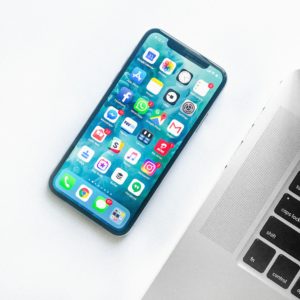Social Media Cleanse: What I Learned Going off the Grid
Published on November 19, 2018, at 3:21 p.m.
by Ali Carden.
Social media is the source of so many different types of content, from news to trends to family updates. According to a Zephoria Digital Marketing blog, “4.75 billion pieces of content are shared daily” on Facebook. With this amount of information constantly being consumed by readers, it is easy to become overwhelmed, distracted or addicted to constant updates. However, is it possible that we are too dependent on social media?
As public relations practitioners, it is our job to stay ahead of the curve and to know where trends will take us so that we can become better strategic thinkers. Without staying up to date on today’s latest news, this can be difficult.

Pew Research Center reports that in 2017, 67 percent of Americans got some of their news from social media. This is a small increase from 2016 when 62 percent of adults in the U.S. said they got a portion of their news from social media. Although a small increase, it is still obvious that people are increasingly depending on social media for news.
In order to test my own dependency on social media, I decided to distance myself for a week. All of my personal apps were deleted from my phone: Facebook, Instagram, Snapchat and Twitter. I discovered various positive and negative things about this “social media cleanse,” especially from a PR student perspective.
Unfortunately, without social media I was uninformed, out of touch and unaware of what my friends and family were doing. However, I replaced the social media apps on my phone with direct news source apps. Through muscle memory and habits, I would open news source apps instead of social media apps.
This allowed me to read articles directly from news sources such as FOX or CNN, instead of depending on Facebook to show me sponsored posts or what my opinionated Facebook friends choose to share. I became more well-read and aware of what was going on in the world around me rather than just the views and activities happening within the small web of people I am virtually connected to.
“Social networking already accounts for 28 percent of all media time spent online, and users agedbetween 15 and 19 spend at least three hours per day on average using platforms such as Facebook, Twitter and Instagram,” said Adweek. “Around 70 percent of internet use of people at work has nothing to do with their job.”

These statistics show that there is a growing issue with time management when it comes to time spent on social media. It is distracting, addicting and decreases productivity. During my week without social media, my thoughts felt less cluttered, and I saw an increase in productivity throughout the day. Not only did this allow me to get work done on a timely schedule, but it also allowed me to get the proper rest I needed without the constant flow of information and pictures clogging my mind.
Another positive to deleting my social media apps was that I was able to spend quality time with those around me. Without the distraction of social media, intentional conversations among friends, peers and professors took place. With more time to be able to dive deeper into conversation, more questions were answered and better relationships were formed. Although public relations can often feel like a very individualistic job, we are a community of communicators both online and in person, and both forms of communication need to be practiced.
Now that I have re-downloaded social media onto my phone, I can see the importance of finding a healthy balance between scrolling through social media or choosing to abstain from it in order to create the perfect harmony of productivity and knowledge.
In this age of technology, we need both. However, we do not need to tip the scale too far one way or the other. Social media can be a positive tool to use as a PR practitioner, but only when used properly.




